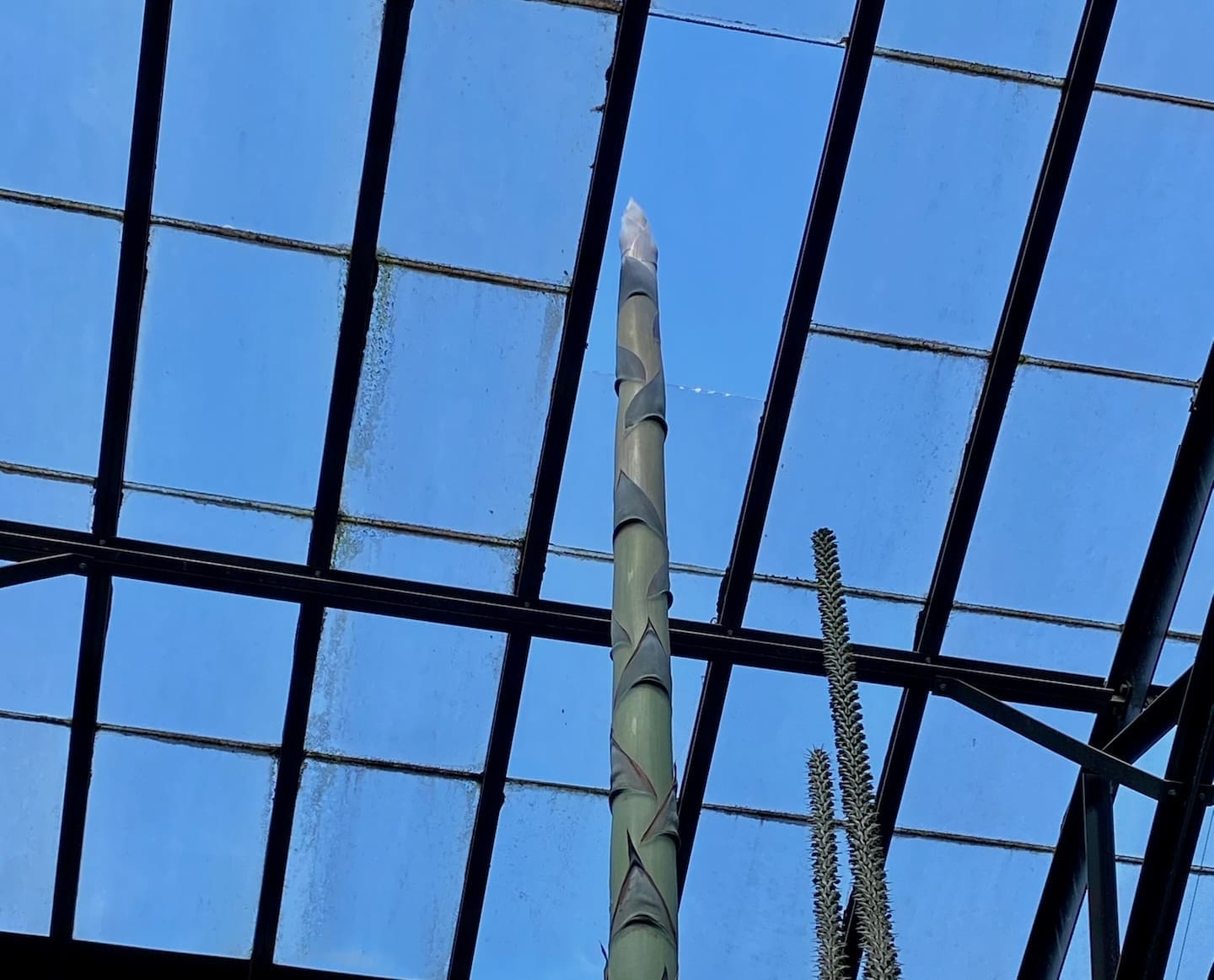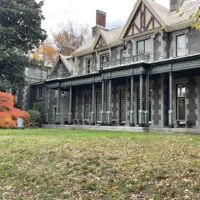

Longwood Gardens has removed a pane of glass from the conservatory roof to allow the century agave to bloom. Courtesy of Longwood Gardens.
A plant that’s towering over its landscape as it’s flowering has made Longwood Gardens remove a pane of glass from the conservatory roof of its Silver Garden to give it room to grow – and grow and grow.
It’s called the century plant (Agave americana).
Though once believed a century-long wait was needed for flowering, Agave americana typically blooms after 10 to 25 years. When it does, a single flowering stalk emerges from the center of its leaves, adorned with greenish-yellow flowers in branched clusters, towering to heights of 15 to 30 feet or more.
Staff members removed the pane of glass to ensure optimal conditions for the flowers to develop and bloom over the span of four to five months.
RELATED: Longwood’s restored Orchid House will show even more blooms


The century agave is in Longwood’s Silver Garden, which showcases plants with that color. Courtesy of Longwood Gardens.
This perennial succulent is monocarpic, meaning it only blooms once before it dies. Following the bloom, the main plant will be removed, making way for another specimen to take its place.
Two century plants have previously bloomed at Longwood Gardens, in 1997 and 2007.
“Many visitors like me came just to see and photograph this rare blossoming,” fan Roger Walck recalled a few years after seeing the 2007 event.
RELATED: Longwood gets bit more du Ponty by adding Granogue estate
Horticulturists at Longwood typically take the mature size of plants into consideration when adding them to a permanent display. Since Agave americana blooms so seldomly and only for a short time, Longwood accommodates it by removing a panel of glass in the roof.
How Longwood found new homes for some plants
In 2021, Longwood relocated 55 plants from their previous West Conservatory locations to Main and East Conservatory display spaces in preparation for Longwood Reimagined.
One plant that made its way to its new Longwood East Conservatory home is a rabbit’s-foot fern (Davallia fejeensis ‘Major’), which has been part of the collection for nearly 70 years and weighed 1,380-pounds at the time. It required a very carefully planned and implemented move from the Tropical Terrace to the Camellia House.
A blog post offers fascinating details and photos.
Share this Post








